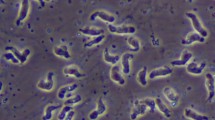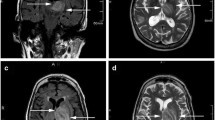Abstract
Balamuthia mandrillaris is an opportunistic agent of lethal granulomatous amebic encephalitis (GAE). In mice, we have shown that intranasally instilled B. mandrillaris amebae infect the brain via the olfactory nerve pathway. In this study, we raised the question whether this ameba might also reach the brain after an oral/gastrointestinal infection. Immunocompetent (WT) and immunodeficient (RAG) mice received B. mandrillaris amebae by gavage into the esophagus. Mice of both groups became ill and some died (WT 20%, RAG 40%) within 42 days. All orally infected mice revealed B. mandrillaris amebae in the central nervous system. Outwardly intact amebae and/or specific antigen were found widely distributed in various organs and the stool. The data indicate that oral infection with B. mandrillaris leading to GAE is possible. Exit from the gastrointestinal tract and dissemination remains unresolved. Though stool cultures were negative, transmission of this highly pathogenic ameba via stool cannot be ruled out.




Similar content being viewed by others
References
Booton GC, Schuster FL, Carmichael JR, Fuerst PA, Byers TJ (2003) Balamuthia mandrillaris: identification of clinical and environmental isolates using genus-specific PCR. J Eukaryot Microbiol 50:508–509 (Suppl)
Bravo F, Sanchez MR (2003) New and re-emerging cutaneous infectious diseases in Latin America and other geographic areas. Dermatol Clin 21:655–668
Janitschke K, Martínez AJ, Visvesvara GS, Schuster FL (1996) Animal model Balamuthia mandrillaris CNS infection: contrast and comparison in immunodeficient and immunocompetent mice: a murine model of “granulomatous” amebic encephalitis. J Neuropathol Exp Neurol 55:815–821
Jarolim KL, McCosh JK, Howard MJ, John DT (2000) A light microscopy study of the migration of Naegleria fowleri from the nasal submucosa to the central nervous system during the early stage of primary amebic meningoencephalitis in mice. J Parasitol 86:50–55
Kiderlen AF, Laube U (2004) Balamuthia mandrillaris, an opportunistic agent of granulomatous amebic encephalitis, infects the brain via the olfactory nerve pathway. Parasitol Res 94:49–52
Kiderlen AF, Tata PS, Martinez AJ, Janitschke (2000) Protection from infection with the opportunistic ameba Balamuthia mandrillaris (Visvesvara, 1993) is mediated by CD4+ T cells. 19th Meeting of the German Society of Parasitology, Stuttgart, Germany
Kiderlen AF, Tata, PS, Laube U, Janitschke K (2002) The opportunistic ameba Balamuthia mandrillaris: Possible pathways of infection. 20th Meeting of the German Societies of Parasitology. Lübeck-Travemünde, Germany
Kiderlen AF, Laube U, Radam E, Matzk P, Tata PS (2004) The ameba Balamuthia mandrillaris infects immunodeficient mice also by cutaneous and oral routes. Int J Med Microbiol 293(suppl 38):54
Kiderlen AF, Tata PS, Özel M, Laube U, Radam E, Schäfer H, (2006) Cytopathogenicity of Balamuthia mandrillaris, an opportunistic causative agent of granulomatous amebic encephalitis. J Eukaryot Microbiol 53 (in press)
Martínez AJ, Visvesvara GS (1997) Free-living, amphizoic and opportunistic amebas. Brain Pathol 7:583–598
Martínez AJ, Visvesvara GS (2001) Balamuthia mandrillaris infection. J Med Microbiol 50:205–207
Martínez AJ, Duma RJ, Nelson EC, Moretta FL (1973) Experimental Naegleria meningoencephalitis in mice. Penetration of the olfactory mucosal epithelium by Naegleria and pathological changes produced: a light and electron microscope study. Lab Invest 29:121–133
Pritzker AS, Kim BK, Agrawal D, Southern PM, Pandya AG (2004) Fatal granulomatous amebic encephalitis caused by Balamuthia mandrillaris presenting as a skin lesion. J Am Acad Dermatol 50:S38–S41
Sadaka HAH, Emam EE (2001) Is the intestinal tract a portal of entry for Acanthamoeba infection? J Egypt Soc Parasitol 31:781–790
Schuster FL, Visvesvara GS (1996) Axenic growth and drug sensitivity studies of Balamuthia mandrillaris, an agent of amebic meningoencephalitis in humans and other animals. J Clin Microbiol 34:385–388
Schuster FL, Visvesvara GS (2004) Free-living amoebae as opportunistic and non-opportunistic pathogens of humans and animals. Int J Parasitol 34:1001–1027
Shadrach WS, Rydzewski K, Laube U, Holland G, Özel M, Kiderlen AF, Flieger A (2005) Balamuthia mandrillaris, free-living ameba and opportunistic agent of encephalitis, is a potential host for Legionella pneumophila bacteria. Appl Environ Microbiol 71:2244–2249
Visvesvara GS, Martínez AJ, Schuster FL, Leitch GJ, Wallace SV, Sawyer TK, Anderson M (1990) Leptomyxid ameba, a new agent of amebic meningoencephalitis in humans and animals. J Clin Microbiol 28(12):2750–2756
Visvesvara GS, Schuster FL, Martínez AJ (1993) Balamuthia mandrillaris, n.g., n.sp., agent of amebic meningoencephalitis in human and other animals. J Eukaryot Microbiol 40:504–514
Acknowledgements
We thank Prof. Frederick L. Schuster for his most generous mental support. All experiments comply with current German law.
Author information
Authors and Affiliations
Corresponding author
Rights and permissions
About this article
Cite this article
Kiderlen, A.F., Laube, U., Radam, E. et al. Oral infection of immunocompetent and immunodeficient mice with Balamuthia mandrillaris amebae. Parasitol Res 100, 775–782 (2007). https://doi.org/10.1007/s00436-006-0334-5
Received:
Accepted:
Published:
Issue Date:
DOI: https://doi.org/10.1007/s00436-006-0334-5




